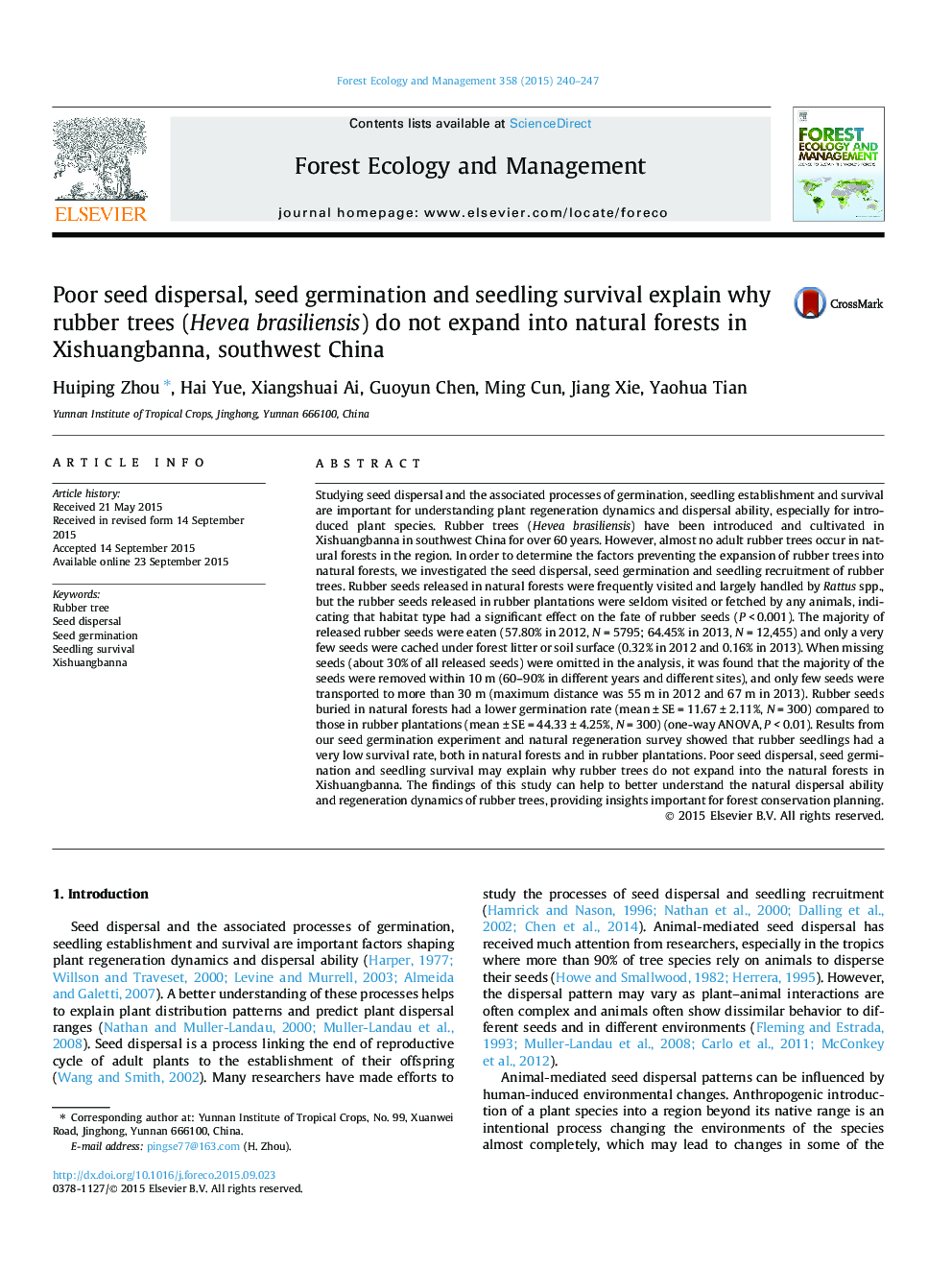| کد مقاله | کد نشریه | سال انتشار | مقاله انگلیسی | نسخه تمام متن |
|---|---|---|---|---|
| 86076 | 159163 | 2015 | 8 صفحه PDF | دانلود رایگان |

• We focused on the natural expansion of rubber trees in Xishuangbanna area.
• Rubber seeds were mainly handled by small rodents from Rattus genus.
• Very few rubber seeds could be effectively dispersed into natural forests.
• Seed germination and seedling survival rate were very low in natural forests.
• This study can help to understand the natural dispersal and regeneration dynamics.
Studying seed dispersal and the associated processes of germination, seedling establishment and survival are important for understanding plant regeneration dynamics and dispersal ability, especially for introduced plant species. Rubber trees (Hevea brasiliensis) have been introduced and cultivated in Xishuangbanna in southwest China for over 60 years. However, almost no adult rubber trees occur in natural forests in the region. In order to determine the factors preventing the expansion of rubber trees into natural forests, we investigated the seed dispersal, seed germination and seedling recruitment of rubber trees. Rubber seeds released in natural forests were frequently visited and largely handled by Rattus spp., but the rubber seeds released in rubber plantations were seldom visited or fetched by any animals, indicating that habitat type had a significant effect on the fate of rubber seeds (P < 0.001). The majority of released rubber seeds were eaten (57.80% in 2012, N = 5795; 64.45% in 2013, N = 12,455) and only a very few seeds were cached under forest litter or soil surface (0.32% in 2012 and 0.16% in 2013). When missing seeds (about 30% of all released seeds) were omitted in the analysis, it was found that the majority of the seeds were removed within 10 m (60–90% in different years and different sites), and only few seeds were transported to more than 30 m (maximum distance was 55 m in 2012 and 67 m in 2013). Rubber seeds buried in natural forests had a lower germination rate (mean ± SE = 11.67 ± 2.11%, N = 300) compared to those in rubber plantations (mean ± SE = 44.33 ± 4.25%, N = 300) (one-way ANOVA, P < 0.01). Results from our seed germination experiment and natural regeneration survey showed that rubber seedlings had a very low survival rate, both in natural forests and in rubber plantations. Poor seed dispersal, seed germination and seedling survival may explain why rubber trees do not expand into the natural forests in Xishuangbanna. The findings of this study can help to better understand the natural dispersal ability and regeneration dynamics of rubber trees, providing insights important for forest conservation planning.
Journal: Forest Ecology and Management - Volume 358, 15 December 2015, Pages 240–247